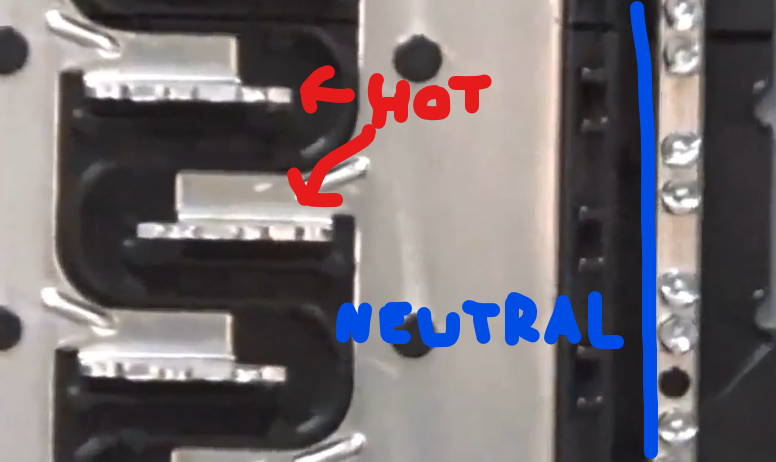I'm trying to install AFCI breakers on my kitchen SABCs (2x 20A circuits), in my Square D Homeline panel. Unfortunately, the breakers trip whenever I try to do anything useful on those circuits.
I've spent hours going over all the wiring inside the boxes and making sure connections are tight, conductor wrapping is intact, and even taping around every outlet to avoid something accidentally making contact or arcing with ground when the receptacle is pushed back in. I'm at a point where the breakers don't trip if nothing is connected to the receptacles (tested for 24hr+), but plugging in and using almost any appliance trips them, including:
- Toaster (~5 years old)
- Air fryer (~2 years old)
- Fridge (see also AFCI required for fridge dedicated circuit?)
- Nest Hub Max
I've tried 3 different Homeline HOM120PCAFIC breakers (2 of the same batch from Amazon, and 1 of another batch from Home Depot). The latter was still in its manufacturer plastic wrapping that I had to cut with scissors, so I'm sure it was new. I got the same results on all of them.
I need to get these circuits inspected, since they were modified / re-routed (over 6') in a recent project with an associated permit. My state is on 2020 NEC and requires AFCI everywhere inside. AFCI breakers are the last thing blocking inspection.
Questions
Are Homeline AFCI breakers just known to nuisance trip often? I know Siemens had a class-action lawsuit against them for nuisance tripping at one point, but didn't think Square D had that too.
Are all my appliances just crappy and arcing all the time, and need to be replaced?
Are there any other options I haven't considered for getting this inspected?



